Field testing and, to a lesser extent, geophysical surveying are major sources of both qualitative and quantitative data relating to the ground conditions. Field testing forms an essential part of many site investigations. There are several reasons for this, probably the most important of which is because it provides, for design purposes, parameters which represent a more realistic appraisal of geotechnical ground conditions than is commonly the case with laboratory testing. Our extensive selection of field testing methods helps to get an idea of the behaviour and properties of the substrata under structural loads.
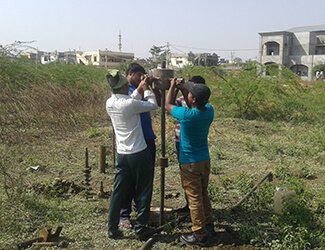
Auger Boring, Rotary Drilling
Drilling is carried out to obtain soil samples from the ground in order to test their index and engineering properties.
Boring involves boring in all kinds of soil/weathered strata by hand auger. Rotary boring involves boring in all kinds of strata using rotary drilling by wash boring method as per IS –1892 –1979.

Undisturbed Soil Sampling
Procuring representative undisturbed soil samples from the semi cohesive strata by using 100mm diameter and 45cm long sampling tubes at regular interval of 3.0m depth/change in strata. UDS samples are extracted as they represent as close as possible to the original soil structure and material properties without undergoing much alteration or modification.
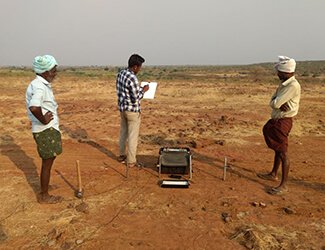
Electrical Resistivity Tomography Test
ERT is an in-situ test to determine the resistivity of soil to the flow of electricity. Soil resistivity is a measure of how much the soil resists the flow of electricity. An understanding of the soil resistivity and how it varies with depth in the soil is necessary to design the grounding system in an electrical substation.

Nx Rock Coring
Drilling through rock using Nx size drill bits beyond refusal depending upon type of rock as per IS 6926. Nx size is one of the standard drill core size and most frequently used for engineering explorations.
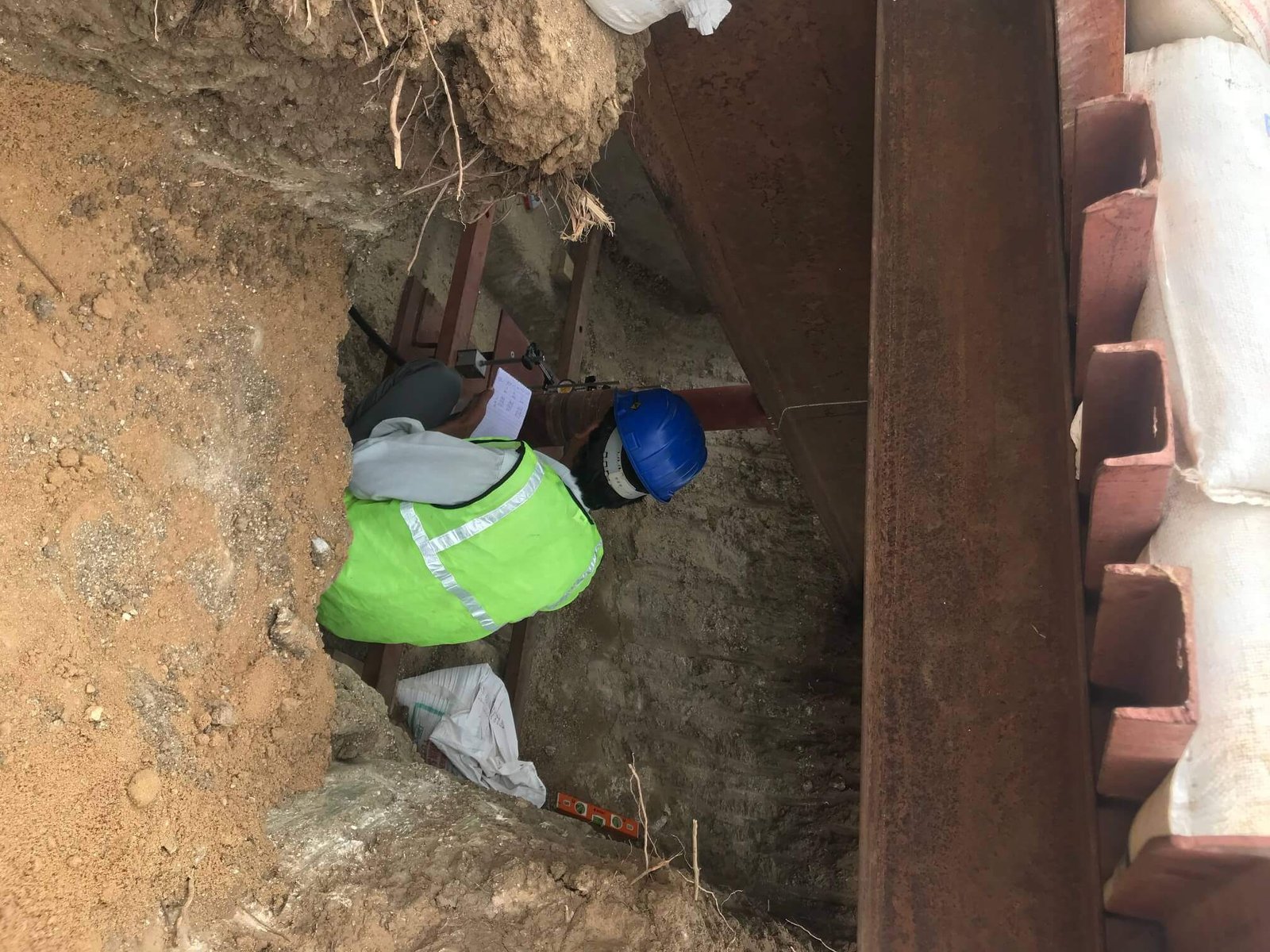
Plate Load Test
Plate load test is performed on site to determine the ultimate bearing capacity of soil at the desired depth as per IS 1888. Data from plate load test is helpful to confirm the design assumptions made from soil test or can be used as a design parameter.

GroundWater Monitoring
Groundwater monitoring systems can be an important part of many construction projects where dewatering, groundwater remediation or water supply systems are involved.
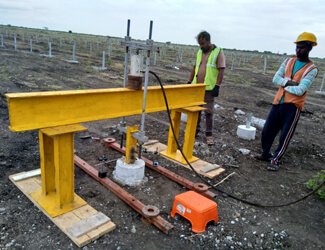
Pile - Pullout Test
Tests to determine the pullout capacity of piles as per IS 2911- part 4. Piles should be able to withstand uplift loads due to wind etc. This test is done to evaluate the uplift capacity of piles or capacity of piles in tension.
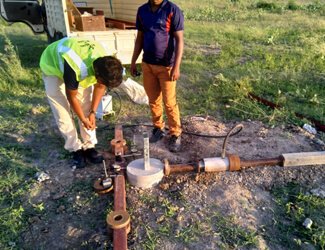
Pile - Lateral Load Test
Tests to determine the lateral capacity of piles as per IS 2911- part 4. Piles should be able to withstand lateral loads that they are subjected to. This test evaluates the lateral load capacity of piles.

Field Density Test (Core Cutter / Sand Replacement Method)
In – situ test to determine the field density of soil using core cutter or sand cone method. The knowledge of field density or natural density of soils is an important index property and is related to various other useful soil properties.

Field Permeability Test
Conducting in –situ permeability tests in soil/rock as per IS 5529 Parts 1&2. In soils, the interconnected pores provide passage for water. A large number of such flow paths act together, and the average rate of flow is termed the coefficient of permeability, or just permeability. It is a measure of the ease that the soil provides to the flow of water through its pores.

Block Vibration Test
This is a test generally used for estimating dynamic soil properties. It is carried out as per IS 5249.

Cross Borehole Test
Crosshole (or “crosswell”) seismic test is conducted to measure the velocity of seismic waves between boreholes. This test finds applications in bridge/dam foundation analysis, in situ materials testing, soil and rock mechanics, earthquake engineering, liquefaction analysis etc.

Seismic Refraction Testing (SASW & MASW)
The spectral-analysis-of-surface-waves (SASW), or Multi Channel Analysis of Surface Waves (MASW), in situ methods for determining shear-wave velocity profiles. This is a Geophysical method which evaluates the elastic condition (stiffness) of the ground for geotechnical engineering purposes. MASW first measures seismic surface waves generated from various types of seismic sources—such as sledge hammer—analyzes the propagation velocities of those surface waves, and then finally deduces shear-wave velocity (Vs) variations below the surveyed area that is most responsible for the analyzed propagation velocity pattern of surface waves.

Pile Load Test
Tests to determine the vertical capacity of piles in compression as per IS 2911- part 4 The purpose of a pile load test is:-
- To determine settlement under working load
- To determine ultimate bearing capacity
- To ascertain as a proof of acceptability

SPT, CPT, DCPT, SCPT Testing
Auger boring involves boring in all kinds of soil/weathered strata by hand auger. Rotary boring involves boring in all kinds of strata using rotary drilling by wash boring method as per IS –1892 –1979.
CPT or cone penetration testing is a means of testing the soil resistance by forcing a rod with a cone-shaped tip into the soil at a measured rate. The extent of penetration at each stage indicates the resistance to shear and the overall ability of the soil to bear a load.
DCPT or Dynamic Cone Penetrometer Test provides a measure of materials in- situ resistance to penetration. The test is performed by driving a metal cone into the ground by repeated striking it with an 8 kg weight dropped from a distance of 575mm.The penetration of cone is measured after each blow and is recorded to provide a continuous measure of shearing resistance up to 1200mm below the ground surface.

